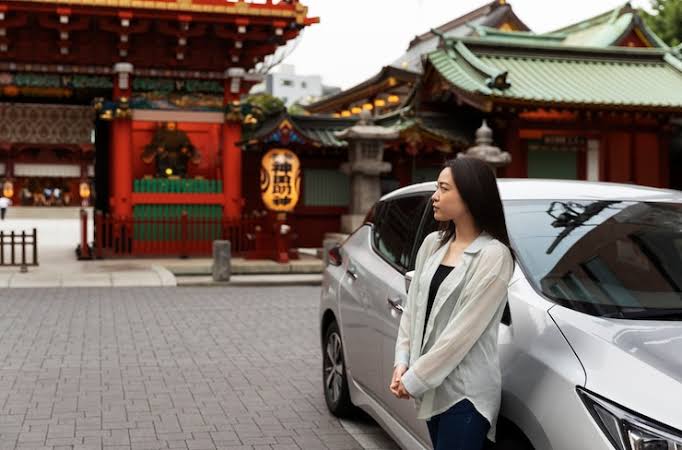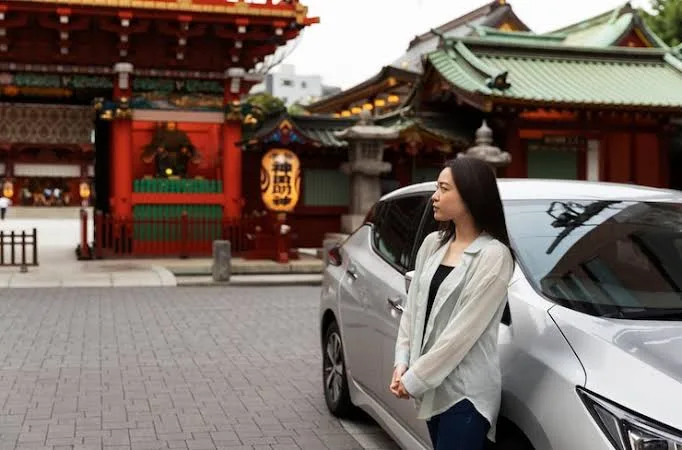Tuesday, July 15, 2025

In recent years, the automotive industry has witnessed a profound transformation, particularly within China’s rapidly growing market. One of the most significant factors contributing to China’s dominance in the global automotive scene is its remarkable ability to reduce vehicle development time significantly, outpacing even some of the world’s most established automotive giants. This acceleration in the manufacturing and development process, particularly in electric vehicles (EVs), has created both challenges and opportunities within the industry. Chinese automakers, such as BYD, Chery, and Xpeng, have leveraged this new era of speed and innovation to not only dominate the domestic market but also set their sights on global expansion.
One of the most striking examples of China’s automotive prowess came from Chery, a leading Chinese automaker that made headlines with a quick overhaul of the Omoda 5 SUV. This SUV, designed initially for China’s smoother streets and slower speeds, was modified in just six weeks to meet the needs of European markets, which feature winding, bumpy roads. This rapid adaptation and the subsequent success of the Omoda 5 in Europe exemplify the disruptive power of Chinese automakers, especially when compared to their Western counterparts, who typically require longer periods for similar modifications.
Chery’s ability to bring the European-spec Omoda 5 to market in record time stands as a testament to the speed and flexibility of Chinese manufacturers. Riccardo Tonelli, the senior vehicle-dynamics expert at Chery, who led the overhaul of the Omoda 5, emphasized that such rapid changes would be nearly impossible for a European automaker. In contrast to the more bureaucratic and slow-moving processes found in many Western car manufacturers, Chinese automakers, particularly those backed by government support and advanced manufacturing techniques, have become increasingly adept at quickly responding to market demands.
China’s Competitive Advantage in Speed and Innovation
China’s automotive dominance is largely rooted in its ability to drastically shorten vehicle-development timelines. While Western automakers typically take several years to design and launch a new model, Chinese automakers have slashed development times to as little as 18 months. This rapid turnaround is in stark contrast to the industry norm, where European and American car manufacturers often spend upwards of five years between a vehicle’s initial concept and its launch. The shorter development cycles of Chinese automakers allow them to keep their product offerings fresh, introducing updated models more frequently than their Western counterparts.
One of the key strategies employed by Chinese automakers to speed up development is the use of digital tools, including artificial intelligence (AI) and simulations, rather than relying solely on extensive real-world testing. While traditional automakers often conduct rigorous physical testing with prototypes, Chinese companies like BYD and Chery have embraced a more flexible, “fail-fast” approach, using digital simulations and AI-driven designs to quickly identify issues and implement solutions. This approach mirrors the fast-paced, iterative development methods used by technology companies in Silicon Valley, where products are regularly updated based on user feedback rather than waiting for perfect prototypes.
Additionally, Chinese manufacturers make extensive use of standardized vehicle platforms and components across multiple models. This allows for more efficient production, as the same parts can be used in a variety of vehicles, reducing costs and production time. For example, BYD’s EV lineup is built using standardized platforms, which allows the company to quickly scale production and introduce new models at an accelerated pace. This efficiency in design and manufacturing gives Chinese automakers a competitive edge in terms of cost and flexibility.
The Importance of BYD: A Giant in the Global Automotive Market
BYD, China’s largest automaker, has become a symbol of the country’s rising automotive power. With a workforce of nearly 900,000 employees, BYD has made impressive strides in expanding its global presence. The company’s ambitious growth plans have allowed it to become a leading player not only in China but also in international markets, particularly in the electric vehicle sector. In 2024, BYD’s sales reached over 3.7 million units, marking a dramatic increase from 2020’s figures of approximately 400,000 cars. This growth trajectory shows no signs of slowing down, with projections indicating that the company will continue to dominate the EV market in the coming years.
The rise of BYD is rooted in its ability to vertically integrate its operations. Unlike many Western automakers, BYD produces many of its own components, such as batteries and electric drivetrains, rather than relying on third-party suppliers. This control over its supply chain gives BYD greater flexibility, allowing it to reduce production costs and avoid the supply chain disruptions that have plagued other manufacturers. Furthermore, this integrated approach enables the company to push vehicles to market faster, a critical advantage in the fast-evolving EV sector.
BYD’s ability to rapidly develop and launch new vehicles has been a key factor in its success. The company has released more than 40 all-new models since the launch of its best-selling Model Y in 2020, a pace that far exceeds Tesla’s model rollout. This constant flow of new vehicles ensures that BYD remains competitive and relevant in the rapidly changing automotive landscape. Additionally, BYD’s focus on hybrid vehicles has allowed the company to cater to a broader market, including consumers who are not yet ready to fully embrace electric-only models.
Chery: Expanding into Global Markets with Speed
Chery, another leading Chinese automaker, is also making significant strides in international markets. As China’s largest auto exporter, Chery has built a strong presence in over 100 countries, selling more than 1.14 million vehicles outside China in 2024. This is nearly half of the company’s total sales, marking a significant achievement in Chery’s global expansion strategy. The company’s ability to quickly adapt its vehicles for foreign markets has been a major factor in its success, particularly in Europe, where Chery has been making a concerted effort to expand its reach.
Chery’s success is also tied to its ability to innovate quickly and efficiently. The company’s approach to vehicle development involves creating between five and ten digital design proposals for every new model, allowing it to quickly pivot and create alternative designs if a model does not perform well in the market. This level of flexibility allows Chery to avoid the lengthy development cycles seen in Western automakers, ensuring that the company can quickly respond to market demands and changes in consumer preferences.
The Chery Omoda 5, a model that was quickly adapted for the European market, is an example of this agility. The car, which was initially designed for China’s smoother roads and slower speeds, was overhauled in just six weeks to meet the demands of European driving conditions, such as winding, bumpy roads. This quick adaptation, which included changes to the car’s suspension, steering, traction control, brakes, vibration dampers, and tires, showcases Chery’s ability to compete in the global market by offering products that meet the specific needs of different regions.
The Competitive Threat of Chinese Automakers
The rapid development pace of Chinese automakers has posed a significant challenge to legacy automakers in Europe, the U.S., and other parts of the world. The ability of Chinese companies to reduce vehicle-development times by more than half has given them a major competitive edge. As these companies continue to churn out new models at an accelerated pace, traditional automakers are struggling to keep up. Legacy manufacturers such as General Motors, Volkswagen, and Toyota have recognized the threat posed by Chinese automakers, and many are scrambling to increase the speed of their own product development processes in order to stay competitive.
The pace of innovation in China’s automotive sector has also led to price competition. Many Chinese brands, including BYD and Chery, have slashed the prices of their vehicles, making them more affordable for consumers. In some cases, Chinese automakers are able to offer vehicles that are priced significantly lower than comparable models from traditional manufacturers. This pricing advantage has made Chinese vehicles more appealing to price-conscious consumers, particularly in emerging markets where affordability is a key consideration.
The Global Shift: Chinese Automakers Gain Ground in Western Markets
While Chinese automakers have historically been focused on the domestic market, their growing presence in Europe, the U.S., and other international markets signals a significant shift in the global automotive landscape. Chinese automakers have begun to target markets traditionally dominated by Western and Japanese manufacturers, challenging the status quo and reshaping the competitive dynamics of the industry.
The growing success of Chinese automakers in Europe is a direct result of their ability to offer affordable, high-quality vehicles with cutting-edge technology. With the global push toward electric vehicles and sustainable mobility, Chinese brands like BYD, Chery, and Xpeng are well-positioned to take advantage of the increasing demand for EVs. By combining lower costs, faster development cycles, and innovative features, Chinese automakers are carving out a niche for themselves in Europe’s competitive automotive market.
The Future of the Chinese Automotive Industry
Looking ahead, the future of the Chinese automotive industry appears bright. With a focus on innovation, speed, and affordability, Chinese automakers are poised to continue expanding both domestically and internationally. However, challenges remain, particularly in terms of building brand recognition and overcoming skepticism among Western consumers, who may be hesitant to embrace Chinese vehicles due to concerns about quality and safety.
Despite these hurdles, Chinese automakers have shown a remarkable ability to adapt and thrive in a highly competitive environment. By leveraging their advantages in cost, technology, and production speed, Chinese brands are expected to continue gaining ground in global markets. As these companies expand their reach and improve their product offerings, they will likely reshape the global automotive industry and become key players in the transition to electric vehicles and sustainable mobility.
The Rise of Chinese Automakers and the Future of Global Competition
Chinese automakers have made significant strides in recent years, with companies like BYD, Chery, and Xpeng leading the charge in reshaping the global automotive industry. Through rapid development cycles, innovative technologies, and competitive pricing, these companies have successfully positioned themselves as formidable competitors to traditional Western and Japanese automakers. As the industry continues to evolve, Chinese automakers are expected to play an increasingly important role in shaping the future of global transportation. Their ability to quickly adapt to market demands and push out new models at an unprecedented pace has given them a clear advantage in the rapidly changing automotive landscape. The rise of Chinese automakers represents a fundamental shift in the global automotive market, one that will continue to challenge established players and drive innovation in the years to come.







